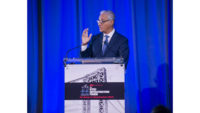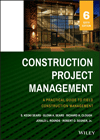Dream Projects: Nicaragua Canal Faces Huge Costs
Whether or not the world needs another Central American canal is also a question. Even though the ongoing Panama Canal expansion now rings up at $5.3 billion and is expected to be delivered two years late, experts say it still will sufficiently address shipping capacity in the region and pose addition strain on competing corridors, including the Nicaraguan project.
“I’m sure it’ll never get completed,” says David Rogers, a professor at Missouri University of Science and Technology and geotechnical expert. He points out that, according to the Panama Canal Authority (ACP), the waterway handles approximately 3% of the world’s maritime commerce and last year, with about $2.4 billion in annual revenue. Even if the canal through Nicaragua “robs half that traffic, you can’t make that pencil out for a $50-billion investment,” Rogers says.
Geotechnical issues are another concern. The region’s volcanic soil may be ideal for growing coffee, but it does not hold up well under the pressures of heavy construction. Destabilized earthen cuts and mudslides set back the original Panama Canal’s construction for years, long delaying its payback time.
“It is a strain-softening material,” Rogers says of the local soil. “If you allow it to start straining, then it loses strength.” Cuts for the Panama Canal expansion are heavily engineered and supported with tiebacks, he says.
Meanwhile, Panama Canal authorities are starting preliminary investigations for a fourth-lane expansion. “We looked at the Nicaraguan Canal as a possible threat,” Jorge Quijano, ACP administrator, told ENR during an Oct. 6 interview in Panama City. “I think the return on investment is here in Panama and not somewhere else. That’s why the attention is on the fourth set of locks, which would give us additional capacity to handle anything that would go otherwise to Nicaragua.”
Even so, Wang and HKND may stand to gain far more than pure shipping revenue. Ray Levitt, a professor at Stanford University and megaproject consultant, explains that the project’s model of transit-oriented development, in which land surrounding the proposed canal becomes more valuable through the establishment of ports, airports, free-trade zones, hotels, offices, residences and the like, could give the developer more bang for its buck.
“You could support it by all the ancillary development,” Levitt says, adding that the project would also offer new opportunities to Chinese workers and exporters alike. “I think there could be a lot in this for the government of China,” he says. Establishing a Chinese presence in Central America would be a big deal for the Chinese.”
Moving forward, the project could stand to gain more global support if it embraced transparency, infrastructure experts told ENR. The official website is thin on details, depicting little more than deal-signing ceremonies with Nicaraguan President Daniel Ortega and field trips with project officials. HKND did not respond to ENR’s request for an interview.
Will Nicaragua succeed in its dream project to compete with Panama? If it does, it will have to clear major hurdles besides the project’s high cost.
“There are very few projects of this scale that don’t have 40%, 50% or even 100% cost overruns,” Levitt says. “But there are obviously deep enough pockets in China to finish this, especially if the government of China views this as a strategically important project to gain a foothold in the Western Hemisphere.”









